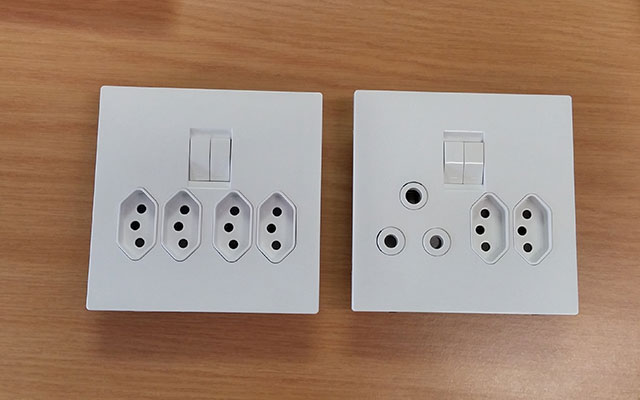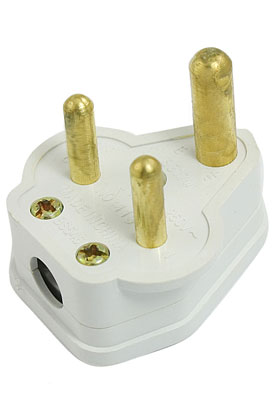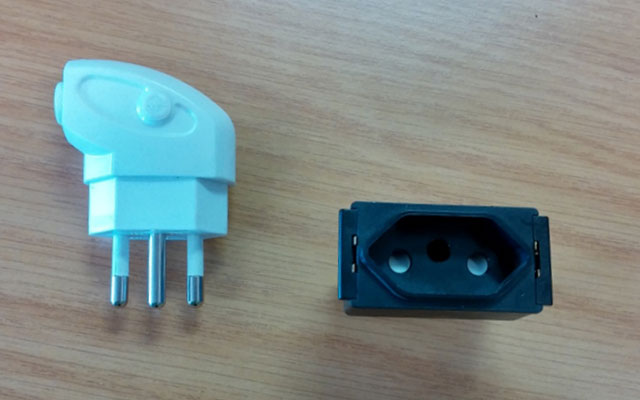
South Africans could soon find themselves having to wrestle with a new type of electrical plug following the adoption of an apparently much safer standard for plugs and sockets.
SANS 164-2 was introduced as the “preferred standard” for electrical plugs and sockets by the South African National Standard for the Wiring of Premises (known better as the Wiring Code) in 2013, says South African Bureau of Standards (SABS) SC23B mirror committee chairman Gianfranco Campetti.
“The plan is for all new installations of plugs and sockets to be the 164-2 standard from around 2015,” says Campetti. “However, there could be delays or changes.”
South Africa has long used its own, unique three-pin plug that doesn’t fit electrical sockets used elsewhere in the world. In fact, there are over 50 different plug and socket configurations used across the world today.

Plugs and sockets based on SANS 164-2 will be available from April this year, says Campetti. However, products fitted with the new plugs — kettles, irons, fridges — could take a few years to arrive on retail shelves.
The country’s unique plug stems from the fact that as a former British colony, South Africa adopted the UK standard of three large round pins as early as the 1930s. When the UK switched to flat pins in the 1970s, South Africa should have followed suit, but didn’t — mainly due to commercial reasons.
The BS 546 British standard adopted by South Africa is codified in SANS 164-0, which is made up of nine different plug and socket configurations, of both two-pin and three-pin types. The three-pin plugs are polarised and un-fused (they don’t have individual fuses) and are not interchangeable between electrical current ratings.
At the end of the 1990s, two significant developments occurred, explains Campetti. The Europlug came to South Africa as a basis for cellphone chargers, and small hand-tool manufacturers introduced the unearthed Schuko, a German standard, into the market.
Cellphone two-pin plug chargers are double-insulated, don’t need earth pins and convert 220V into 5V (depending on type), says Campetti.
“South Africa had no choice but to hastily introduce these standards as the various device manufacturers were not prepared to make specific versions for the relatively small SA market.”

The two standards are the SANS 164-5 two-pin, non-rewireable system (2,5A; 250V) for equipment like cellphone chargers and the SANS 164-6 two-pin system (16A; 250V) for equipment like power tools and electric lawnmowers.
After World War II, the International Electrotechnical Commission (IEC) decided to create a worldwide configuration. The IEC is a nonprofit, nongovernmental organisation based in Geneva, Switzerland that sets standards for all electrical and electronic technologies. Bodies around the world, including the SABS, have adopted the standards set out by the IEC.
Campetti explains that as in almost all the European countries, no one was really interested in a global plug and socket standard. “For each country, it was like giving up their language.”
The IEC formed a working group and commenced work in 1956. Thirty years later, in 1986, the IEC 906 standard was published, says Campetti.
“It was during the early 1990s, with a new South Africa looming, that the SABS decided to adopt the standard (introduced as SANS 164-2) as it was seen as a fantastic opportunity for the country to be at the forefront of this ‘worldwide’ plug and socket configuration and be the first country to adopt it.”
However, manufacturers showed no interest in switching to the IEC standard. “No one was prepared to tool up or implement it because of the costs involved,” says Campetti. “Despite this, SANS 164-2 was introduced as a national standard and was specified as the ‘preferred standard’ last year in the code of practice in South Africa. This means that from around 2015, all new installations will have to be fitted with the new standard, and that the old (SANS 164-1) will be phased out over the next 10 to 20 years, or possibly longer,” says Campetti.
“Unfortunately SANS 164-2 will be another unique South African plug and socket configuration, with the exception of Brazil, which uses it and an additional variation with a thicker pins.”
The proposed new plug will have three levels of safety and will be the safest plug point in the world, with only Switzerland’s plug points coming close to that level of safety, according to Campetti.

But will South Africa be at an advantage or a disadvantage by making SANS 164-2 the preferred standard for plugs and sockets?
Campetti says there are three elements to consider when evaluating this. He groups these under “economic”, “technical” and “export”.
The economic element will mean more local manufacturing and jobs, while the technical aspect means South African will have the safest plug and socket system in the world — it will apparently be impossible for a child to put their finger in a socket and get shocked.
The export opportunity, however, won’t be an advantage unless other countries in Southern Africa adopt the standard, too. — (c) 2014 NewsCentral Media

